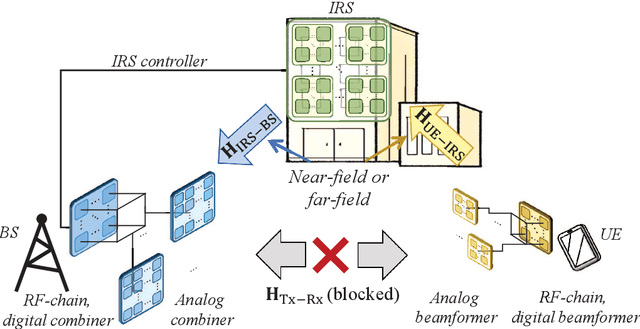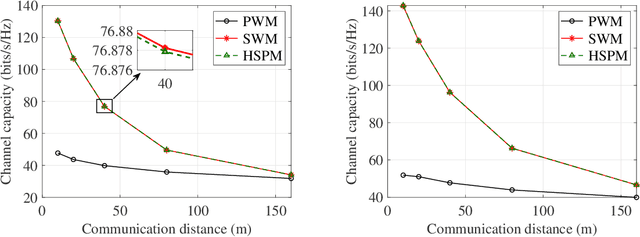Hybrid Spherical- and Planar-Wave Channel Modeling and Estimation for Terahertz Integrated UM-MIMO and IRS Systems
Paper and Code
May 26, 2022



Integrated ultra-massive multiple-input multiple-output (UM-MIMO) and intelligent reflecting surface (IRS) systems are promising for 6G and beyond Terahertz (0.1-10 THz) communications, to effectively bypass the barriers of limited coverage and line-of-sight blockage. However, excessive dimensions of UM-MIMO and IRS enlarge the near-field region, while strong THz channel sparsity in far-field is detrimental to spatial multiplexing. Moreover, channel estimation (CE) requires recovering the large-scale channel from severely compressed observations due to limited RF-chains. To tackle these challenges, a hybrid spherical- and planar-wave channel model (HSPM) is developed for the cascaded channel of the integrated system. The spatial multiplexing gains under near-field and far-field regions are analyzed, which are found to be limited by the segmented channel with a lower rank. Furthermore, a compressive sensing-based CE framework is developed, including a sparse channel representation method, a separate-side estimation (SSE) and a dictionary-shrinkage estimation (DSE) algorithms. Numerical results verify the effectiveness of the HSPM, the capacity of which is only $5\times10^{-4}$ bits/s/Hz deviated from that obtained by the ground-truth spherical-wave-model, with 256 elements. While the SSE achieves improved accuracy for CE than benchmark algorithms, the DSE is more attractive in noisy environments, with 0.8 dB lower normalized-mean-square-error than SSE.
 Add to Chrome
Add to Chrome Add to Firefox
Add to Firefox Add to Edge
Add to Edge